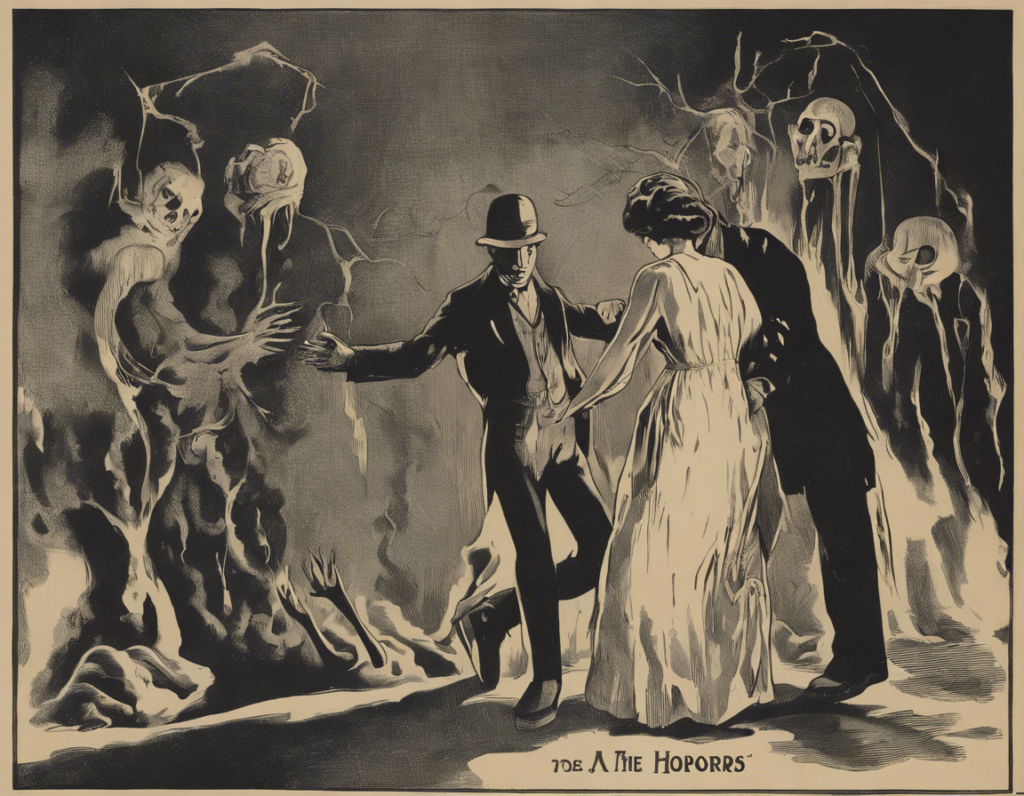Introduction:
The year 1920 was a time of great change and tumultuous events. The aftermath of World War I left many people grappling with loss and uncertainty, while the Roaring Twenties brought about a period of social and cultural transformation. However, amidst the backdrop of historical events, tales of haunting love stories also found their place in the annals of the era. The 1920s marked an era where the human heart was both fragile and resilient, where love stories were fraught with challenges and obstacles that transcended time and space.
The Setting:
The 1920s was a time of great social upheaval, with rapid industrialization and urbanization reshaping the fabric of society. The aftermath of the war left many people questioning traditional values and norms, leading to a shift in cultural attitudes towards love and relationships. The era saw the rise of flappers and the Jazz Age, where hedonism and rebellion against societal constraints flourished. In this setting, love stories emerged that defied societal expectations and norms, capturing the essence of forbidden love and undying passion.
The Haunting Love Story:
One of the most famous love stories of the 1920s was that of Jay Gatsby and Daisy Buchanan, immortalized in F. Scott Fitzgerald’s novel, “The Great Gatsby.” Set against the backdrop of the Roaring Twenties, the novel tells the tale of Gatsby, a wealthy and enigmatic man who is in love with Daisy, a beautiful but shallow socialite. Their love is haunted by the specter of Daisy’s marriage to another man, Tom Buchanan, and the societal expectations that confine them.
The Themes:
The haunting love story of Jay Gatsby and Daisy Buchanan touches upon several themes that were prevalent in the 1920s. Unrequited love, social class divisions, materialism, and the illusion of the American Dream are all central to the narrative. Gatsby’s relentless pursuit of Daisy, despite the obstacles in their path, speaks to the idealism and naivety of the era, where individuals believed they could transcend their circumstances through sheer willpower and determination.
Love in the Time of Uncertainty:
The aftermath of World War I left many people grappling with loss and trauma, leading to a pervasive sense of disillusionment and uncertainty. In such a climate, love stories served as a beacon of hope and solace, offering a glimpse of redemption and meaning in a world that seemed devoid of both. The haunting love stories of the 1920s reflected the yearning for connection and intimacy in a world that was rapidly changing and evolving.
The Legacy:
The haunting love stories of the 1920s continue to captivate audiences to this day, serving as a reminder of the enduring power of love in the face of adversity. From the tragic tale of Jay Gatsby and Daisy Buchanan to the tumultuous relationships of Scott and Zelda Fitzgerald and Ernest Hemingway and Hadley Richardson, these stories provide a window into the human heart and its capacity for both greatness and folly.
Frequently Asked Questions (FAQs):
1. What are some other famous love stories from the 1920s?
Some other famous love stories from the 1920s include the romance between poets Sylvia Plath and Ted Hughes, the tumultuous relationship between painter Frida Kahlo and Diego Rivera, and the affair between writer Anais Nin and Henry Miller.
2. How did the societal norms of the 1920s influence love stories of the era?
The societal norms of the 1920s, including gender roles, class divisions, and sexual mores, greatly influenced the love stories of the era. Many relationships faced challenges due to societal expectations and constraints, leading to themes of forbidden love and social critique in literature and art.
3. What role did literature play in shaping perceptions of love in the 1920s?
Literature played a significant role in shaping perceptions of love in the 1920s, with authors such as F. Scott Fitzgerald, Ernest Hemingway, and Virginia Woolf exploring themes of love, desire, and disillusionment in their works. These authors captured the spirit of the era and its complexities through their storytelling.
4. How did the tumultuous events of the 1920s impact love and relationships?
The tumultuous events of the 1920s, including World War I, the rise of consumer culture, and the Great Depression, had a profound impact on love and relationships. Many couples faced economic hardship, social upheaval, and personal turmoil, which influenced the way they navigated love and intimacy.
5. What enduring lessons can we learn from the haunting love stories of the 1920s?
The haunting love stories of the 1920s teach us valuable lessons about the complexities of love, the power of resilience, and the importance of cherishing the moments we have with our loved ones. These stories remind us that love can transcend time and space, enduring even in the face of adversity and uncertainty.
